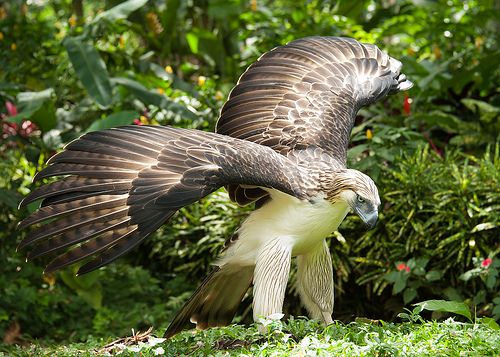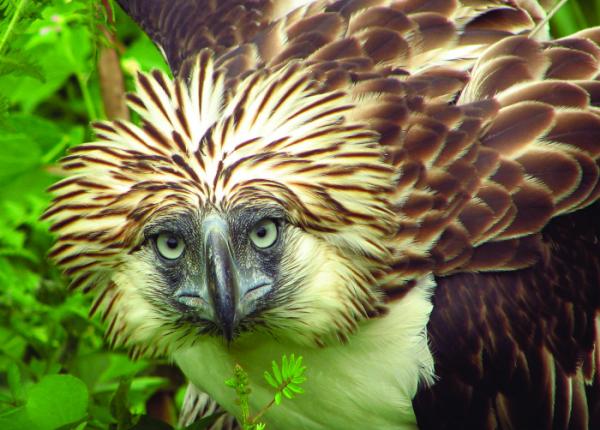

One male (age not specified) was found to weigh 4.04 kg (8.9 lb). The Philippine eagle has a wingspan of 184 to 220 cm (6 ft 0 in to 7 ft 3 in) and a wing chord length of 57.4–61.4 cm (22.6–24.2 in). Its Scientific name is Pithecophaga jefferyi. Philippine Eagle (Pithecophaga jefferyi) is Carnivorous.
With a wing span of nearly seven feet and a top speed at 80 kilometers per hour, it can carry unsuspecting monkey and carry it off without breaking flight. Unlike most animals and humans, Philippine eagles are monogamous and bond for life.
The eagle has a dark face and a creamy-brown nape and crown. The back of the Philippine eagle is dark brown, while the underside and underwings are white. The heavy legs are yellow, with large, powerful, dark claws, and the prominent, large, high-arched, deep beak is a bluish-gray. The eagle's eyes are blue-gray.
The noises heard from a Philippine eagle are described as loud and high-pitched, suggesting its fierce and territorial characteristics.
It can be found in Northern Sierra Madre National Park on Luzon and Mount Apo, Mount Malindang, and Mount Kitanglad National Parks on Mindanao. This eagle is found in dipterocarp and midmontane forests, particularly in steep areas. Its elevation ranges from the lowlands to mountains of over 1,800 m (5,900 ft).
Philippine eagles are generally solitary and spend time singly on in breeding pairs. They are active during the day and at night they rest. Philippine eagles primarily use two hunting techniques. One is still-hunting, in which they watch for prey activity while sitting almost motionlessly on a branch near the canopy.
Philippine Eagles do eat monkeys, but they also prey on a whole host of animals, both large and small. They have been known to hunt bats, civets, flying squirrels, and macaques. They also eat birds, including other birds of prey, snakes and lizards.
THANK YOU